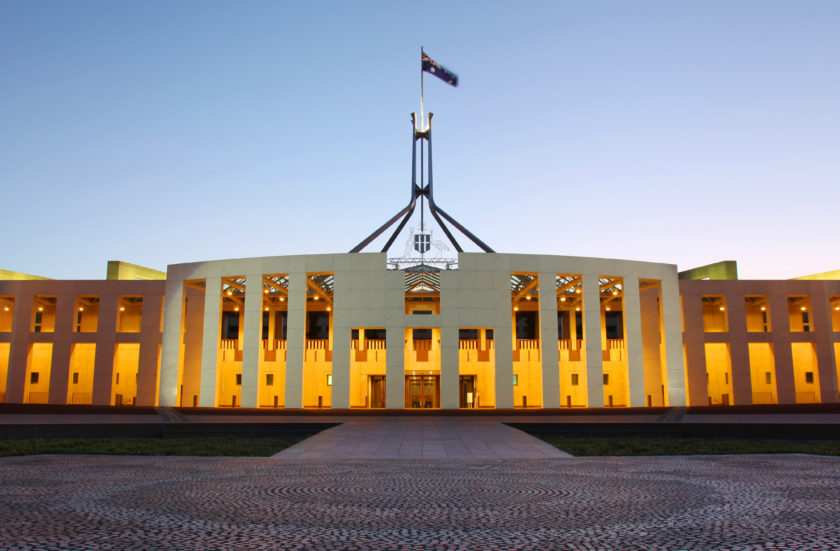The 2021 Federal Budget is arguably the most significant in living memory. Set within the devastation of the COVID-19 pandemic, public spending is the only viable lever to protect the economy from disaster given that monetary policy is no longer effective.
It is a massive stimulus budget. The cost to the public purse is largely through taxation concessions and stimulus capital and income support building upon the foundations of programs such as JobKeeper.
Paying back Government borrowings is going to be a long-term legacy however, given the alternative and the economic benefits that will come via recovery that will follow, it is a bet well placed.
Economic conditions are playing to their hand particularly with low borrowing rates, low coupon costs on issue of Government bonds and the low risk of inflation as money is printed and pumped into the financial system.
Winners include individual taxpayers who will enjoy lower tax rates, businesses who can take advantage of the instant write off for capital expenditure, and for whom the business loss carry back applies.
The losers include individuals who are unemployed or underemployed and self-funded retirees who continue to be impacted by low interest rates and reduced industrial dividend yields. Morrows Private Wealth continues to work successfully with our clients to optimise their risk-weighted returns.
Arguments about winners and losers and the lack of social equity measures aside, it is a vital lifeline to the economy. It will not fully insulate Australia/Victoria from recession – the negative population growth, high saving rates and lack of employment certainty are significant negating factors – but without it, the economy would be devastated.
Our coverage provides commentary on the main initiatives – please read and then talk with us.
Article penned by Hannah, Zoe, Paul H & Isaac along with the Morrows Press Club.
For an in-depth analysis, the following links provide a clear outline of the budget:
Catch of the day: pension loan scheme
Personal tax cuts
Generous tax cuts have undoubtedly sparked mixed feelings in the economy in terms of long-term viability, but we can all individually share a moment of guilty appreciation about what it means for us. The reshuffle of tax brackets has been fast-tracked to the 2021 financial year but whilst the headline is “cash relief” the reality is that most of our clients will not feel the love until assessed post 1 July 2021.
Table of tax rates and income levels:
| Tax rate | Previous income level | New income levels |
| 0% | $0 – $18,200 | $0 – $18,200 |
| 19% | $18,201 – $37,000 | $18,201 – $45,000 |
| 32.5% | $37,001 – $90,000 | $45,001 – $120,000 |
| 37% | $90,001 – $180,000 | $120,001 – $200,000 |
| 45% | $180,001 and over | $200,001 and over |
This is here to stay until 2025, so enjoy.
Individuals in the quarterly PAYG Instalment System may wish to vary the September 2020 instalments that have just been issued. Also, a note for business owners – please ensure that PAYG Withheld payroll settings are brought up to date now the legislation has passed.
Business loss carry backs
This is tantalising news for companies inviting a raft of considerations around effective tax planning. This year’s budget boasts the facility for companies in business to offset revenue losses made in 2020, 2021 and 2022 against profits made in 2019, 2020 and 2021. The bottom line here is that if you have already paid tax on company profits for 2019 or 2020, any losses made up to 2022 can be offset against these profits meaning the refund of company income tax already paid. Of course, the amount refundable will not exceed the amount originally paid. Additionally, no franking account deficit must ensue in carrying back losses; simply put, where tax paid has given rise to a franking credit which has already been attached to a dividend paid, the refund amount from the carry back is limited to tax paid excluding these amounts.
Now might be the time to think about incurring that expenditure on repairs or additional assets that would add value or capacity to your business (see the updates on the instant asset write-off below) in order to go back and secure a tax refund.
Instant asset write-off
The small business instant asset write-off concession and its eligibility criteria have been flitting around like a kid in a lolly shop for quite some time now. The 2021 Budget has confirmed the extension to 30 June 2022 and removed the concept of the threshold altogether, meaning eligible businesses can claim an immediate deduction for the value of all eligible assets installed and ready for use by this date. The eligibility criteria now includes businesses with an aggregated annual turnover of up to $5 billion (up from $500 million) encompassing 99% of businesses. Drilling down, full expensing in the first year will apply to assets acquired from 7.30pm AEDT on 6 October 2020 and first used or installed by 30 June 2022:
- New depreciating assets;
- The cost of improvements to existing eligible assets; and
- For small and medium-sized businesses (aggregated annual turnover of less than $50 million) – second-hand assets
Much like the over-arching theme of the budget, this is to encourage business investment and improve the productive capacity of businesses, which in turn is expected to trickle down and increase employment.
We expect motor vehicle purchases will high on the list so it is important to note:
- The luxury car limit remains at $59,136 for the 2021 financial year, meaning only the business portion of this amount can be immediately deducted in the year of purchase
- Fringe Benefits Tax implications arise where employees and shareholders of the company use the company car for private use
Given the tumultuous events of the past year, preservation of liquidity may be a priority. If so, using borrowed capital may solve the capital investment funding dilemma. Morrows Lending Solutions can assist with accessing finance at low rates. From loans (cash flow or secured against property) to hire purchase loans and chattel mortgages, the team is well-equipped to find a solution tailored to the individual needs of your company. Contact Sarah Zhou on 0412 711 051 or by email at szhou@morrows.com.au
JobMaker scheme
Another money-in-pocket strategy, the JobMaker initiative is designed to encourage businesses to hire additional young employment-seekers by offering a cash credit to the business for every additional role created to employ a person between 16 and 35 years old. Businesses will be able to claim $200 a week for 16-29 year old employees and $100 a week for 30-35 year old employees, for a maximum of 12 months from the date of employment, with the initiative open until 6th October 2021. The reimbursement will be paid at the end of each quarter.
Eligible employees must meet the age requirements and must have previously been receiving JobSeeker payments, Youth Allowance or a Parenting Payment for at least one of the three months prior to the hire date. They would also need to be working for a minimum of 20 hours per week, and must increase the employee headcount.
The hoops for employers to jump through to be eligible for the credit include (amongst other things) PAYGW registration and STP finalisation, and pertinently, they cannot be receiving JobKeeper payments. It will be important to adhere to the criteria here, as anti-avoidance consequences may surface down the track much like what we are starting to see around the cash flow boost incentive.
CGT exemption for Granny Flats
In line with recommendations over recent years regarding living arrangements for elderly Australians or those with a disability, the government is implementing a CGT exemption for formal Granny Flat arrangements, applying from 1 July 2021.
Many elderly people have been living in granny flats under informal arrangements with their family living in the main household. While this enabled the household owners to avoid CGT as the Granny Flat simply fell under the umbrella of the main residence exemption with no formal income-producing capacity, it left the Granny Flat inhabitants vulnerable to financial abuse and exploitation under circumstances of relationship breakdowns and duress.
The 2021 Budget is proposing that in exchange for formal written arrangements, the residence will remain exempt from CGT upon sale. By encouraging the formalisation of these arrangements, the proper legal standing will help reduce the risk of abuse in the case of relationship breakdowns and adversity.
Research & Development (R&D) tax incentive
The previously proposed reduction in the R&D tax offset rate and cash refund cap was met by R&D entities with a collective grimace. Fortunately, the 2021 Budget has confirmed that the 18.5% above the relevant company tax rate offset is kicking on a little longer for companies with an annual aggregated turnover of up to $20 million whilst the originally proposed reduction to 13.5% and $4 million cap is being scrapped. These changes are being put in place in order to help businesses continue to conduct R&D in a tightening economic environment, and better manage the effects of the pandemic in both the short and long term.
Superannuation
Nervous whispers have been circulating recently around expected changes to the taxation of super funds and contributions, the implementation of which many regard to be a ticking time bomb. Fortunately, the 2021 Budget has clarified that there are to be no changes in this area for now, setting everyone’s minds at ease for the moment. Furthermore, the welcome delay to exempt current pension income calculation methods until 1 July 2021 was confirmed.
In the broader spectrum, more attention is to be devoted to the publication of under-performing super funds. Super funds failing to get their act together after two consecutive annual tests will be prohibited from admitting any new members until performance is up to scratch. This is to be monitored by APRA and is all part of the new Superannuation Reform.
Lastly , there have been no noteworthy changes to the age requirements to make non-concessional contributions, nor have there been any updates on the early release of super measure inspired by COVID-19 (that is, a one-off withdrawal of up to $10,000 is still allowed from 1 July 2020 for people meeting the eligibility criteria).
Catch of the day
Pension loan scheme
In order to put more cash into the hands of older Australians, the Pension loan scheme was implemented to allow assets to be used in a secure way to increase the income of pensioners. Having been around for a while, after recent changes the eligibility criteria is more even-handed than ever, and the overview is worth a read.
The scheme is a voluntary reverse equity mortgage that allows Australians eligible for the pension to receive up to 1.5 times the maximum pension rate to live on. Effectively, by taking out a loan (from the government) against insured Australian real estate owned, borrowers can receive a tax-free fortnightly income stream.
The higher the value of your collective real estate, the more you can borrow. The loan does compound interest (currently at 4.5%), however repayments can be made as frequently as desired, and you can choose to stop receiving loan payments at any time. Interest is added to the outstanding loan balance until it is repaid which is typically when the property is sold or otherwise sourced from the borrower’s estate.
Lastly, the loan is considered to be low cost with no establishment or monthly fees, and the fortnightly payments received are not counted towards the age pension income test if you’re worried about toeing the line. As far as supplementary retirement income goes, for some this would be a welcome solution considering the instability of the market and lower than ever interest rates.
Government advice is to seek financial and legal advice before choosing to undertake the loan to determine the best course of action for your specific circumstances. Morrows Private Wealth has a specialisation in Age Care and related matters (contact Maureen Allan on 03 9134 3449 or by email at mallan@morrows.com.au). Morrows Legal is also able to assist with formalisation of documents (contact Rabia on 03 9134 3459 or by email at rjaved-may@morrows.com.au).





